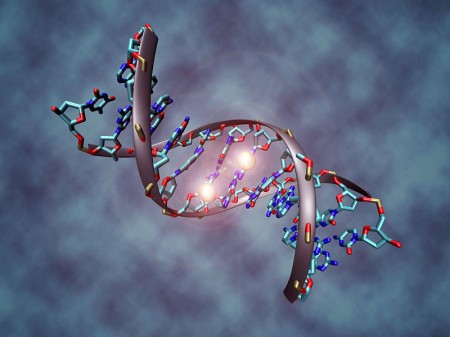Researchers in California have for the first time created an organism whose genetic code comprises six letters, instead of four. This means that the bacterium, described in a study published in Nature today, is the first life form to contain artificial genetic building blocks.
When biologists talk about the letters in the DNA alphabet, they are actually talking about nucleotides: molecules that bind together to make up the DNA double helix. Normally, these molecules are made up of four letters: A,T, C and G. But scientists at the Scripps Research Institute have managed to add a single pair of artificial “X” and “Y” nucleotides to the genetic code of an E. Coli strain, reports The New York Times. And thus far, the bacteria appear to be reproducing normally and passing on the new X-Y pair to their offspring.
Floyd Romesberg, a chemist at Scripps who led the study, told the New York Times that adding letters to the genetic code will allow researchers to “write more words and tell more stories.” But creating “new words” — new life forms and never before seen proteins — is bound to ruffle a few feathers. Jim Thomas, a spokesperson for a Canadian advocacy organization called the ETC Group, told the New York Times that “the arrival of this unprecedented ‘alien’ life form could in time have far-reaching ethical, legal, and regulatory implications.”
(Read the rest of the story here…)
